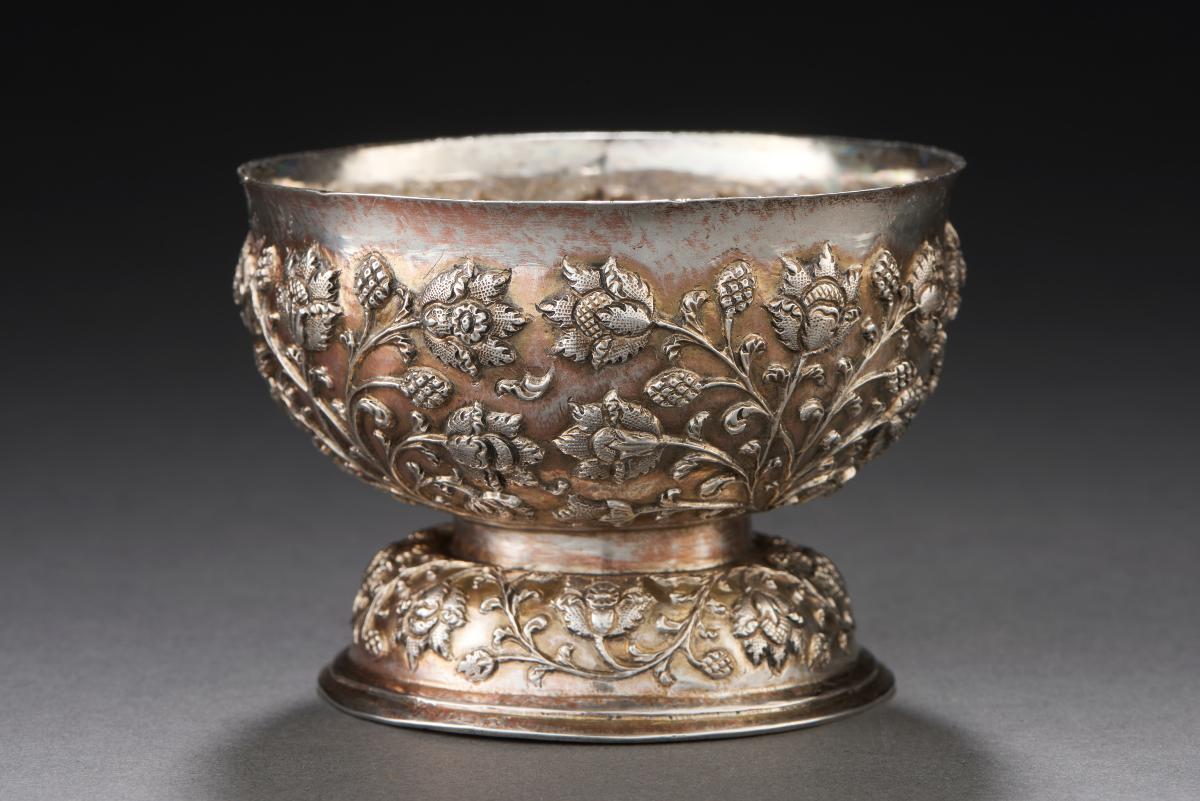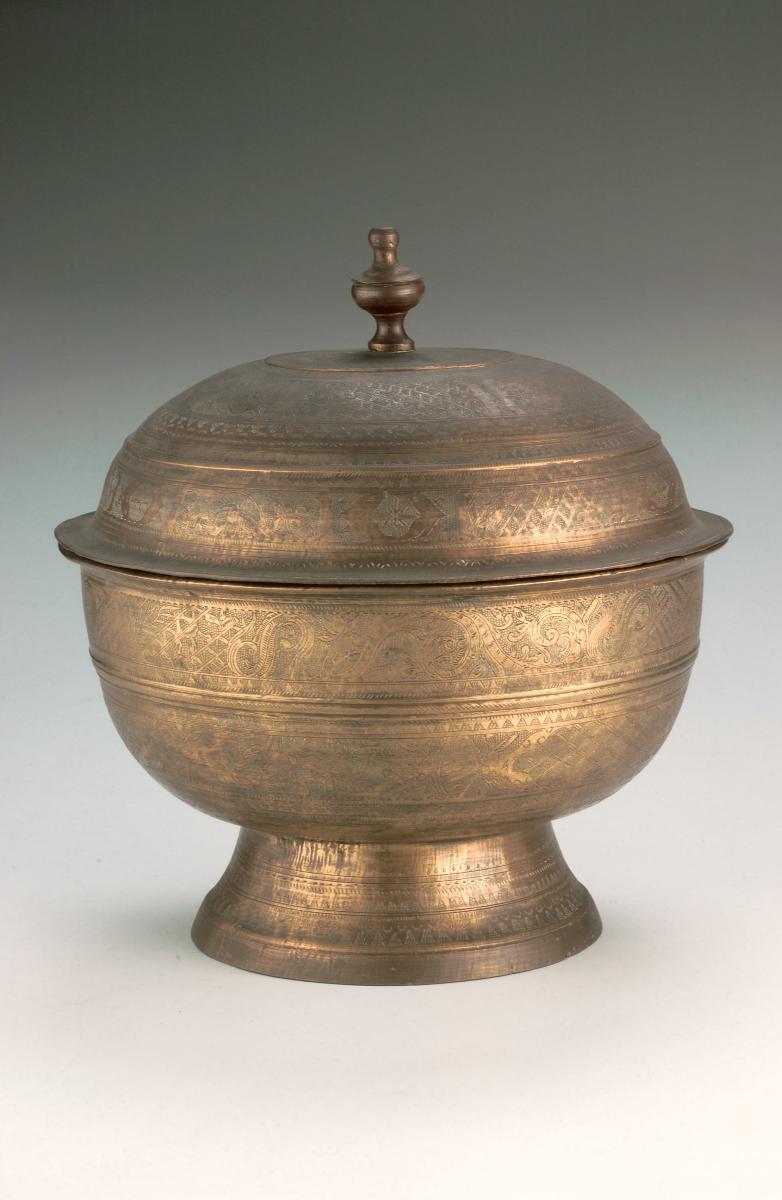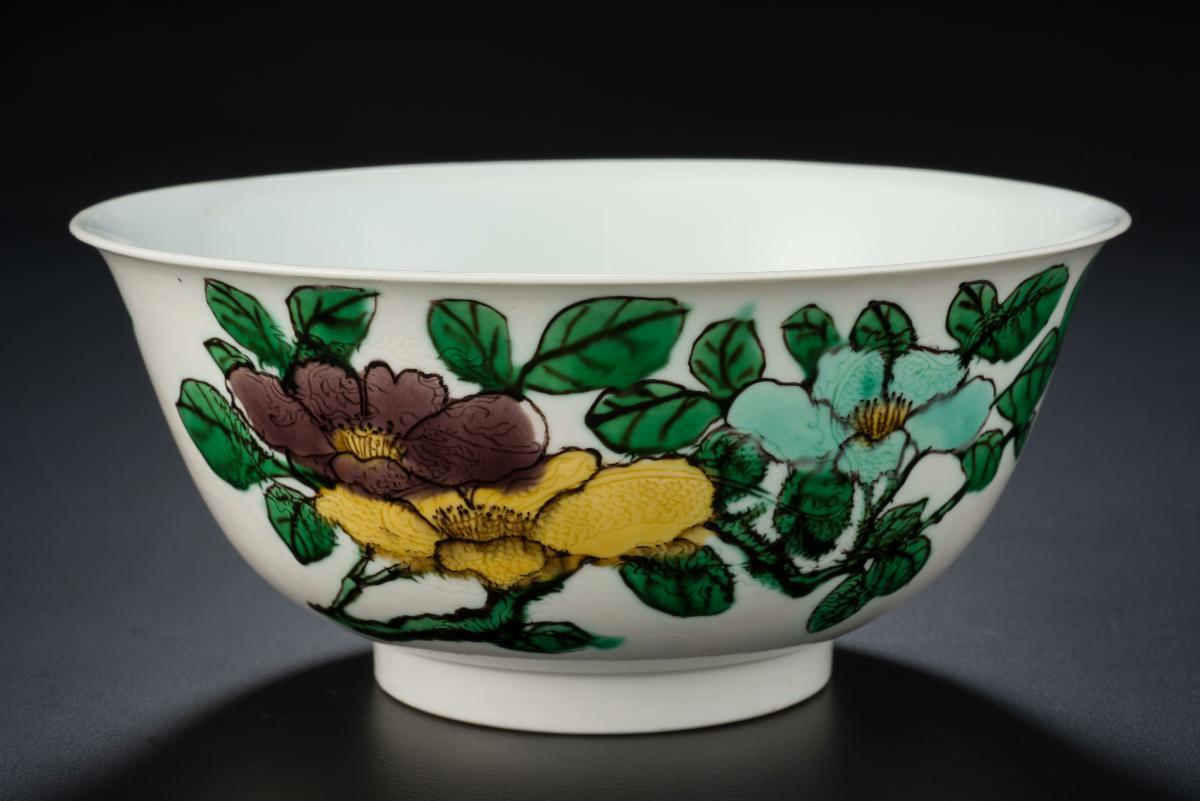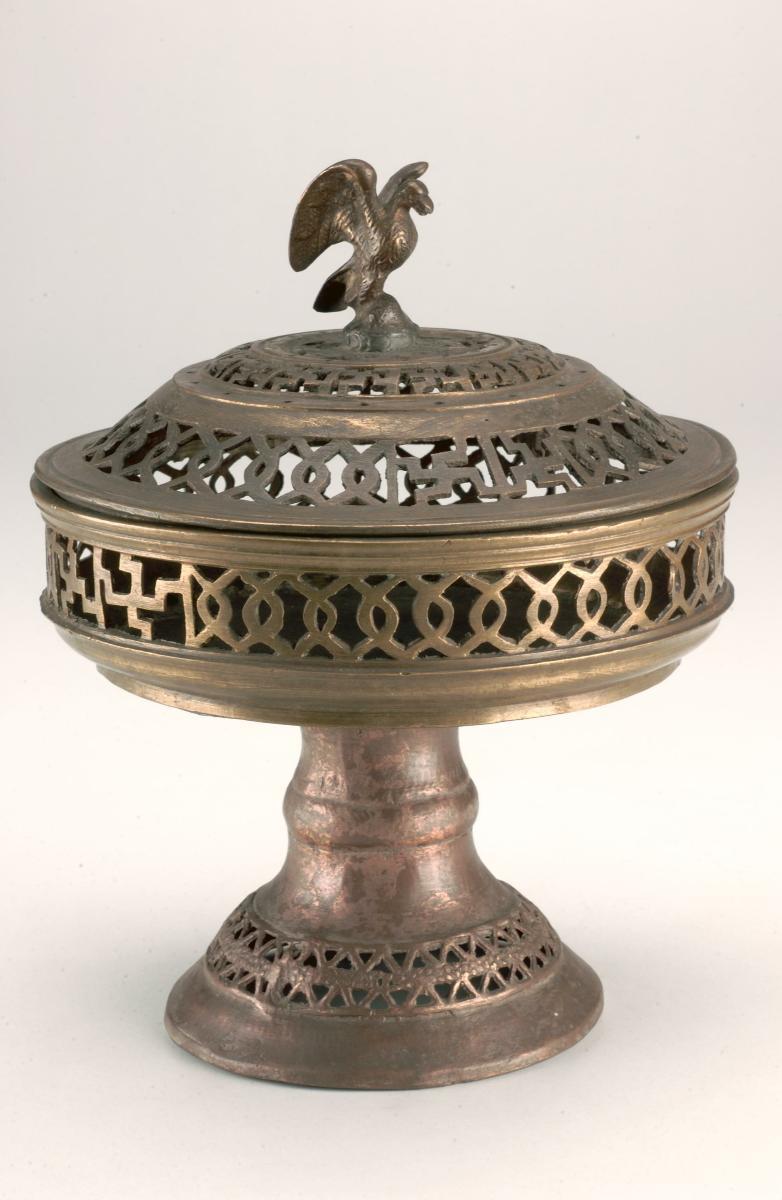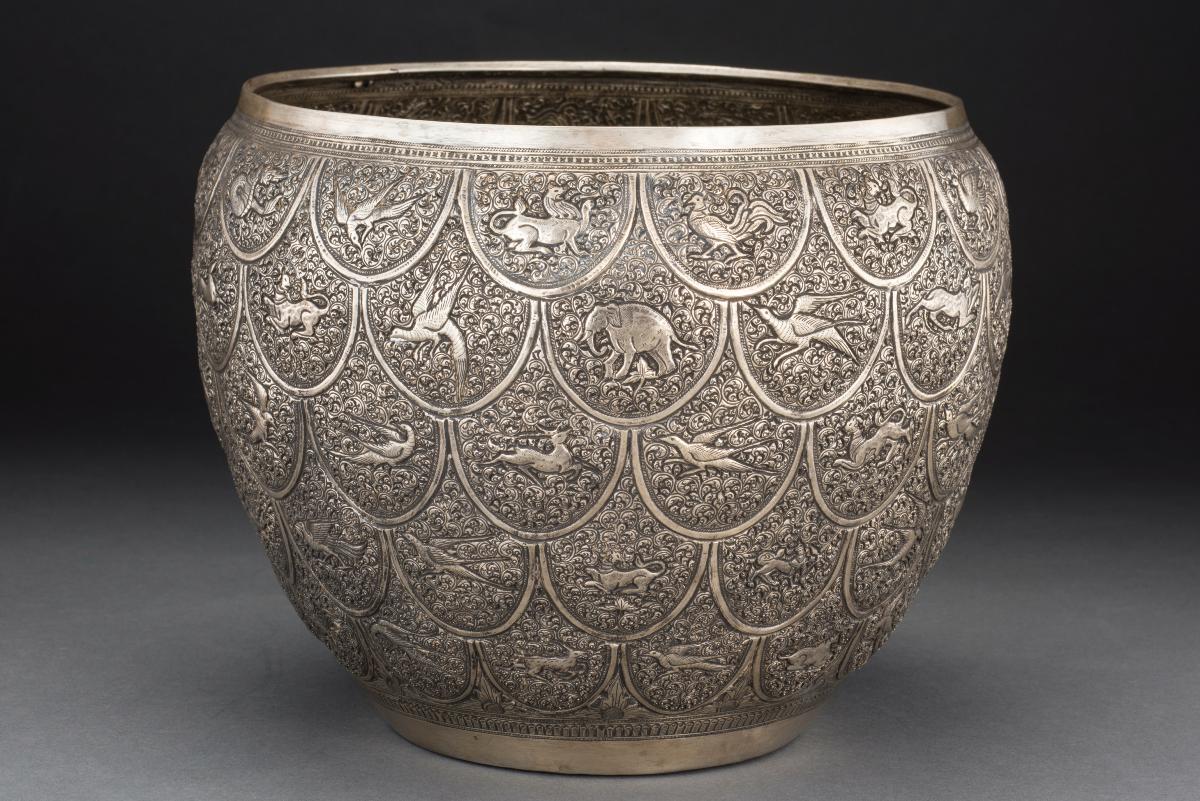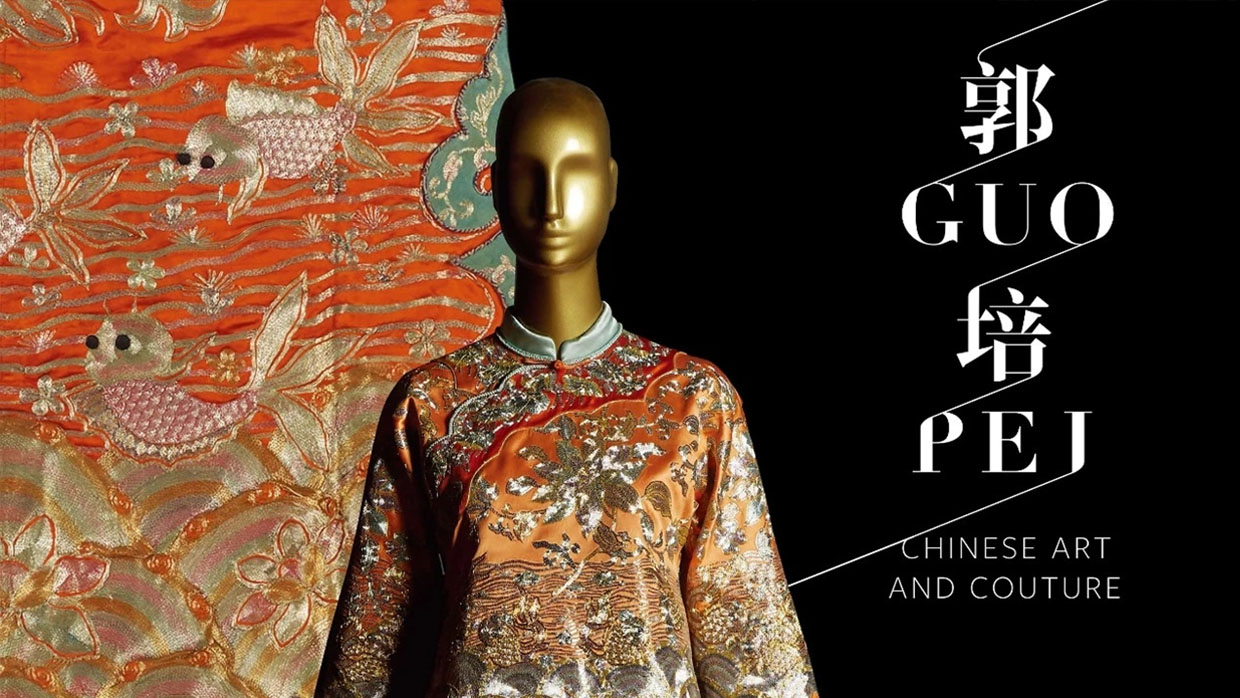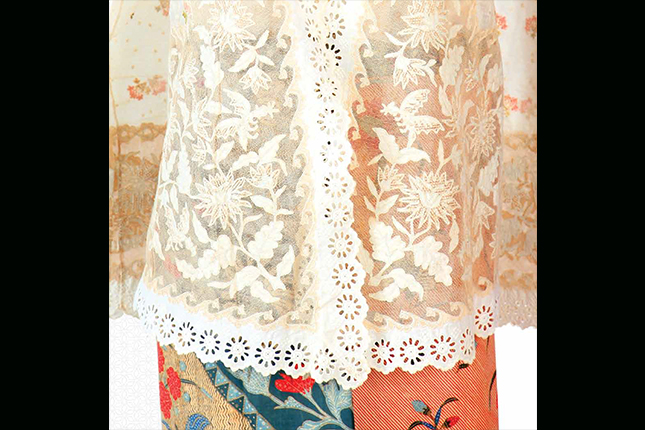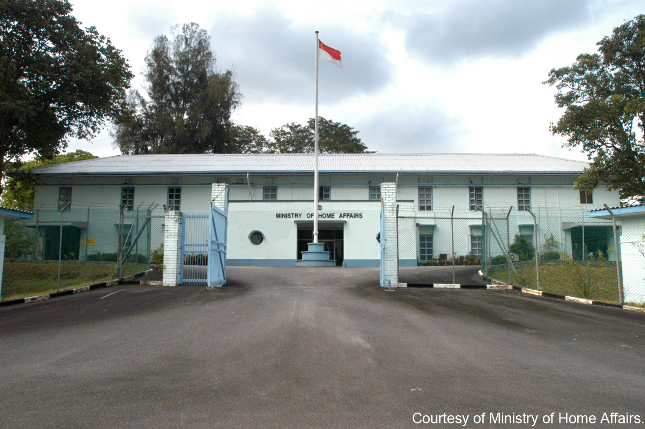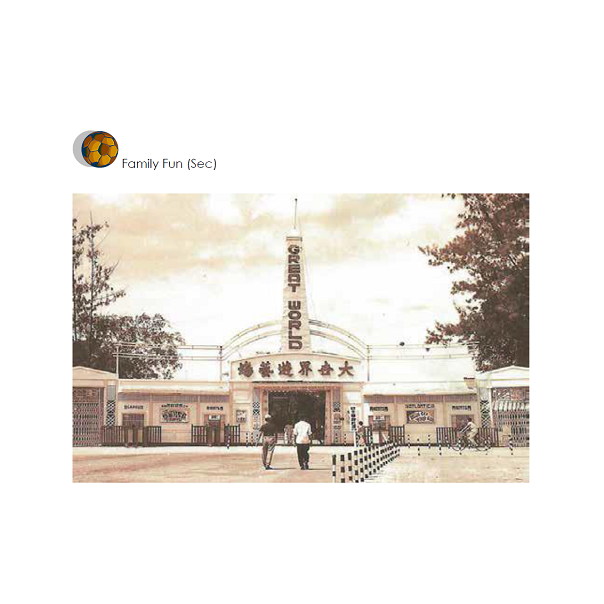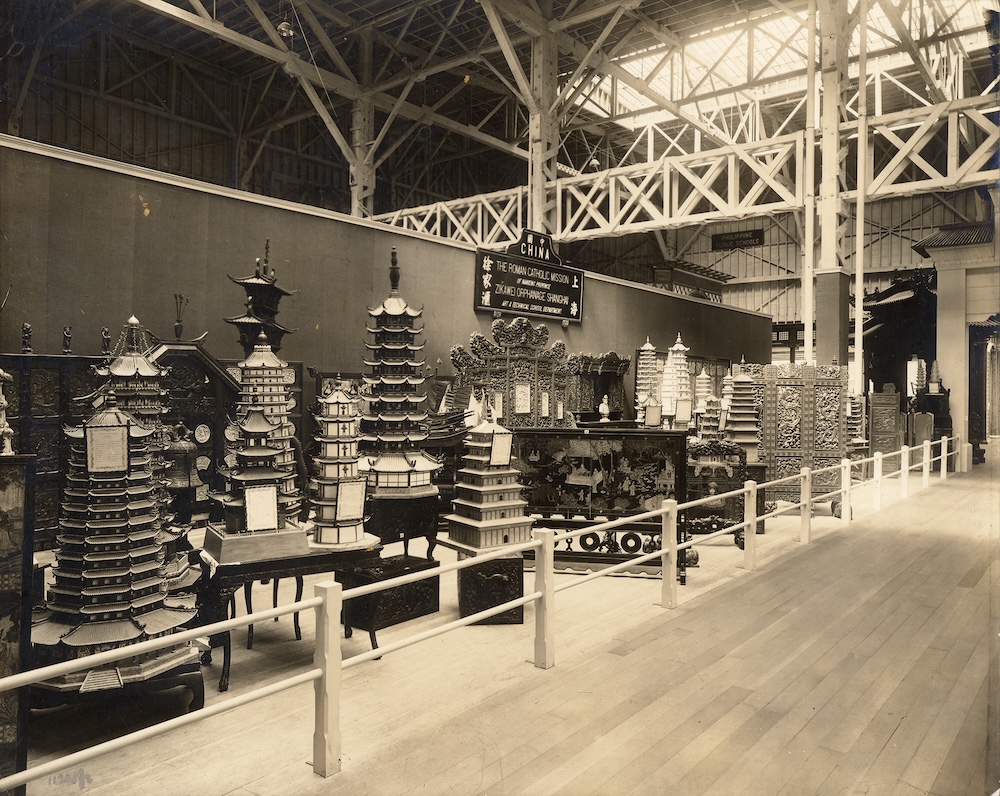Object size: 8.8 cm (Diameter of mouth)
This small bowl has a flared foot and is decorated with repoussé flowering vines. The vines are of a type found widely on silverware from Indonesia and the pattern was probably developed there by indigenous silversmiths. The form of the bowl suggests that it may have been used as a ber pinnang, or betel-nut betrothal cup. Ber pinnang were used in traditional Javanese marriage ceremonies: a man would send a bowl filled with betel to a woman, as a sort of proposal. If she accepted, she would partake of the betel. Betrothal cups typically look like bowls with large flared feet, similar to Thai stem bowls. Many Batavian and Javanese examples have floral repoussé decoration, sometimes separated into panels or gadroons. It might also be a finger bowl, which traditionally is used to rinse the fingers in between courses.It may have been made by Chinese silversmiths, who worked in Sumatra and Batavia from the 17th century. The Dutch arrived in Indonesia in 1595 and established a settlement in Batavia in 1619. The Dutch East Indies, which was composed of large parts of Sumatra, Java, and Borneo, formally came under the control of the Dutch government in 1800. Like the majority of silver made in the Dutch East Indies, this bowl is apparently unmarked. Indonesian, Chinese, Muslim, and Dutch Eurasian silversmiths were not required to hallmark their work in areas administered by the Dutch, unlike silversmiths in British-controlled India.




